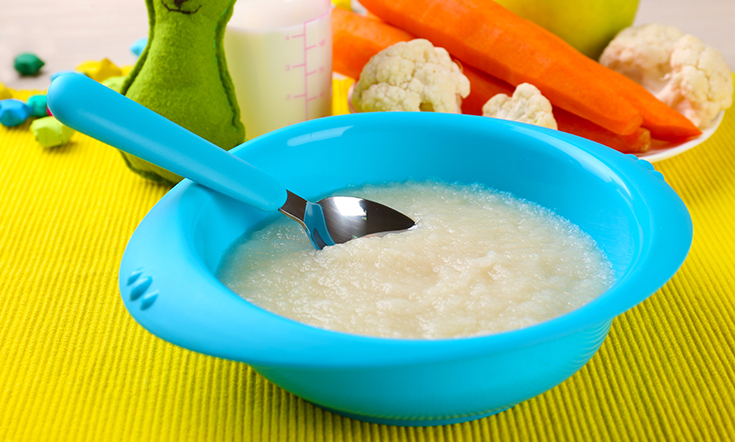

Any mum would agree, those first few months of your baby’s life is filled with a combination of excitement and trepidation, as you tread the turbulent waters of baby-firsts.
There are the easy firsts of course – the first smile, first coo and first time rolling over.
And the not-so-easy firsts … new tooth anyone?
Then there’s those firsts we have to navigate ourselves, and few are more fun to prepare for than baby’s first food.
With increased knowledge of nutrition and health, knowing how to approach this first step can be daunting, with many new parents sticking to the tried and trusted rice cereal.
But why is Rice Cereal always the default?
The simple answer – it’s got what baby needs, and it’s easy.
“From around 6 months of age it is important that babies get enough iron from their diet, as the stores they were born with are starting to run out,” says Dr Paula Smith-Brown, Accredited Practising Dietitian, Head Dietitian at Microba.
Which is why most experts recommend that babies’ first foods are rich in iron.
Baby cereals are iron fortified and easy to prepare so are commonly chosen as a baby’s first food.
But that doesn’t mean it’s the only option, or even the best.
Other iron rich foods include meat, fish, eggs, nut pastes, legumes and pulses.
Dr Smith-Brown says these types of foods also offer a range of other benefits for baby.
“We know that optimal microbiome (gut) health is essential for long term health and that a diet rich in fruits, vegetables, whole grains, nuts, seeds and legumes is the best way to support microbiome health.
“This is why it is vitally important to introduce these foods into your babies diet before they reach 12 months of age so that they will continue enjoying these foods throughout their life to support microbiome health.”
While many of us are aware of the health benefits of iron-rich foods such as meat, fruit and vegetables, parents are often unsure of how to prepare them for little babies.

You could offer your baby patties made from mince meat, a hard boiled egg cut into quarters, add legumes and pulses to purees or spread nut paste on fingers of toast.
In the first 6 months of learning to eat (6 to 12 months of age) children are often very open to exploring new foods while once they reach their toddler years they become more suspicious of unfamiliar foods.
“While learning to eat babies need to have lots of opportunities to explore and play with new foods but may not actually seem to eat much of them.
“This exploration is very important as it teaches children lots of valuable lessons.” See how to introduce baby-weaning here
So put the rice cereal away, grab a few of your favourite fruits and vegetables, and get creative for your baby!























